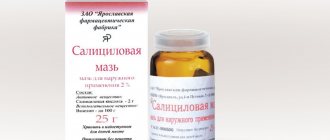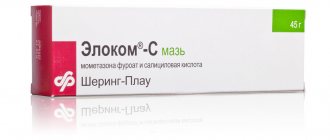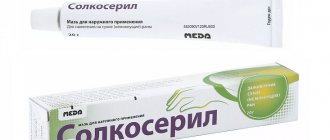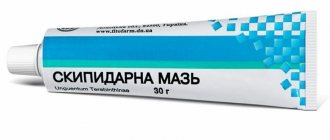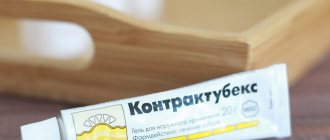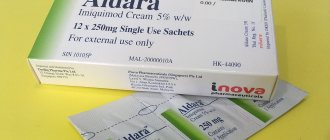Causes of calluses
Before getting rid of corns on your feet, you need to find out the main reasons for their appearance and eliminate them. Most often, calluses occur due to:
- using uncomfortable, narrow shoes or shoes of the wrong size;
- wearing hard shoes on bare feet or a very thin nylon sock;
- a heel that is too high, which causes compression and excessive stress on the forefoot;
- various foot diseases;
- walking barefoot for a long time;
- excessive sweating of the feet;
- wearing shoes with hard seams inside or with rubbing surfaces;
- wearing socks that are too large and cause wrinkles;
- selection of shoe models with thin soles.
2.Why do corns form?
We can definitely say that the predisposition to the formation of corns varies from person to person. For each person, a whole complex of external and internal factors is important here. We have to come to terms with those of them that we are not able to completely change:
- The structure of the foot, abnormalities in the development of the legs (flat feet, bone growths);
- Features of the skin;
- Distribution of subcutaneous adipose tissue;
- Condition of the vascular system of the legs;
- Metabolism, individual characteristics of metabolism;
- Hormonal background;
- Chronic diseases and anamnesis.
If you notice a tendency to form corns, first of all, you need to pay attention to what could cause increased stress on the feet. A number of such reasons are varied and can be corrected:
- Occupation that involves walking or standing during the day;
- Lifestyle, hobbies and activity (running, dancing, ballet);
- Tendency to obesity, excess weight;
- Low-fat diet, vegetarianism;
- Avitaminosis;
- Tight shoes, predominantly wearing high-heeled shoes;
- Fungal diseases of the feet.
Visit our Dermatology page
How to get rid of calluses on your feet yourself
The easiest way to cure a water callus is to wait for it to burst, or to pierce it yourself. However, it is important to take care of disinfection, otherwise there is a risk of infection.
When deciding how to get rid of dry calluses, you need to take into account the area and depth of the lesion. For example, a small thickening on the little finger can be removed with a pedicure file or pumice stone. You may first need to soften the skin in a hot bath with the addition of various components.
Dry calluses on the foot can also be removed by applying salicylic ointment at night or by sticking a special medicated patch.
However, doctors do not recommend removing calluses yourself, as there is always a risk of damaging the skin and causing infection, which will create additional problems and complicate treatment.
List of good ointments for calluses
Remedies for calluses are produced in the form of ointments, pastes and creams, packaged in tubes or jars. The amount of the drug varies from 25 to 100 g.
Super Antimozolin (cream)
The product is made on the basis of lactic acid and carbonic acid diamide (urea). Additionally contains eucalyptus extract. Has a moisturizing, softening and antibactericidal effect. Designed to remove dry calluses and corns.
Mode of application:
- squeeze 2-3 cm of cream onto a medical napkin;
- apply to the keratinized area of skin;
- secure on top with wax paper or cling film;
- put on cotton socks;
- after 2-3 hours, cut off the softened epidermis, wash your feet with warm water.
Treatment requires care. If the cream gets on healthy skin, a burn may occur.
You can buy it at the pharmacy for 110 rubles.
Necallus cream
The composition is represented by sulfur and salicylic acid. Strengthens desquamation, has antifungal and antiseptic properties. Sold in the form of a cosmetic cream to eliminate corns and keratinized calluses on the feet.
Method of use:
- soften dry skin by steaming and dry;
- Apply a sterile napkin with a thick layer of cream to the callus;
- cover tightly with a plaster or bandage.
- stand for 24-36 hours.
After removing the bandage, gently scrub away dead skin.
Apart from individual allergies to salicylic acid, no contraindications have been identified.
Cosmetic cream costs about 60 to 180 rubles.
Salicylic ointment
One of the best ointments against skin problems. Based on the acid of the same name (2% or 10% concentration), with the addition of medical petroleum jelly. Has anti-inflammatory and antiseptic properties. 10% ointment effectively softens and exfoliates dry formations, 2% remedy heals wet calluses. Apply 1-2 times a day under an occlusive (sealed) dressing.
Not recommended for liver and kidney diseases in the decompensation stage.
Pharmacy price for a 25 g tube is from 30 to 40 rubles.
Callus 911
The cosmetic cream contains urea, salicylic acid, tea tree oil. Active components accelerate the desquamation process while simultaneously disinfecting the affected area of the body. Practiced to eliminate keratinized callous formations and corns. Apply 2 times a day, secure with an occlusive bandage on top.
Contraindicated in children. With caution in chronic pathologies of the liver and kidneys.
Produced in 100 ml tubes at a price of 85 rubles.
Bensalitin
A good keratolytic drug with an antiseptic effect. The active ingredients are salicylic acid and a monobasic carboxylic substance (benzoic acid). Recommended for the treatment of rough, old keratinization of the skin.
Mechanism of use:
- soften the affected area of the body in hot water;
- remove keratinized epidermis with pumice;
- apply a thick layer of cream;
- cover with a plaster.
The course of therapy lasts 10 days, with daily dressings 2 times a day.
Do not use in the presence of open wound surfaces, scratches, abrasions. Contraindicated in patients with renal and hepatic decompensation.
The cost varies around 100 rubles.
Levomekol
The drug contains the antibacterial agent chloramphenicol and the immunostimulant methyluracil. It has anti-inflammatory, regenerating and antimicrobial effects. Effective for the rapid healing of wet calluses and the prevention of infection of wound surfaces under a burst callus. Apply pointwise, before use treat the painful area of skin with a water-based antiseptic (Chlorhexidine 0.05% solution or Miramistin).
Do not use for the development of mycosis and psoriasis in the area of calluses.
40 g of the drug costs 120 rubles.
Anti-callus paste “5 days”
The active ingredient is salicylic acid, the ointment base is made up of medical petroleum jelly and animal wax (lanolin). Accelerates desquamation, helps soften hardened growths.
The treatment procedure is carried out according to the following scheme:
- generously anoint the callus;
- secure with an occlusive bandage or several layers of adhesive tape;
- After 12 hours, make a foot bath and clean the exfoliated skin with pumice.
Contraindicated in severe chronic diseases of the kidneys and liver.
Pharmacy cost - within 100 rubles.
Vishnevsky ointment
They are produced in jars in the form of an ointment and in tubes under the name “Balsamic Liniment according to Vishnevsky”.
Contains:
- natural birch tar – a product of distillation of tree resin;
- antiseptic powder xeroform;
- castor seed oil (castor).
It has a bactericidal effect, relieves inflammation, and stimulates blood microcirculation in the damaged area. It is a universal remedy for softening dry growths, disinfecting and healing burst calluses. Apply a thick layer to a medical gauze napkin, cover it with polyethylene on top, and fix it with a dressing. The compress is kept for 12 hours.
Do not use if you are allergic to the components of the ointment.
The price of the drug is 45 rubles.
Zinc ointment
Made from zinc oxide. It has anti-inflammatory antiseptic properties and effectively dries weeping calluses. You can smear destructive areas of the epidermis several times a day.
Absolutely contraindicated in the presence of purulent processes in the area of calluses. A relative contraindication is the perinatal period in women.
25 g of the product can be purchased for 40 rubles.
Heparin ointment
The composition includes the anticoagulant heparin and the local anesthetic benzocaine. It has an analgesic and anti-inflammatory effect, thins the blood. Recommended for the treatment of shallow core calluses.
Correct Application:
- steam rough skin;
- clean the exfoliated layer of the epidermis with pumice;
- apply the product to a sterile napkin;
- apply to the callus;
- secure with an occlusive bandage or tape.
Change dressings every 6-8 hours.
Do not use if there are wounds, scratches, ulcerative skin lesions, or if there is a blood clotting disorder.
The cost of a 25 g tube is 85 rubles.
Bepanten
Local reparative cream based on dexpanthenol. Quickly restores epidermal tissue, relieves inflammation and pain. Apply 2-4 times a day for chafing and open calluses. Approved for the treatment of calluses in children of any age.
Apart from individual intolerance to dexpanthenol, there are no contraindications.
Pharmacy cost of 100 ml of cream is 760 rubles.
Ichthyol ointment
The drug is made on the basis of shale oil (ichthammol) and medical petroleum jelly. The use of ointment eliminates inflammation, relieves pain on the damaged surface, regenerates skin tissue, and prevents infection. Recommended for wet and dry calluses. Use twice a day under an occlusive dressing.
Contraindicated in case of hypersensitivity to ichthammol.
25 g of ointment costs about 100 rubles.
Solcoseryl
Sold in the form of ointment and gel. The basis of the drug is hemoderivat - an extract prepared from the blood of calves. Accelerates regenerative processes, increases collagen production, heals damage. The gel is used in the initial stage of a burst callus to form a protective film. When the wound heals, use ointment. You can treat the skin 2-4 times a day.
Not recommended for allergic reactions.
Depending on the amount of product, the cost ranges from 500 to 800 rubles.
Tetracycline ointment
A local antibiotic has an antimicrobial effect. Practiced for calluses complicated by bacterial infection. It is recommended to smear the affected area and cover with a bactericidal plaster. Frequency of application – 2 times a day, for 1-2 weeks.
Do not use in the treatment of children, pregnant and lactating women, patients with chronic liver pathologies.
Pharmacy price – 90-100 rubles.
Cream-balm Mozolka
Cream based on tea tree essential oil, papaya and amaranth extracts. Effectively copes with small cracks and corns. Moisturizes and softens the skin. Recommended for the skin of the legs and arms, as a therapeutic and prophylactic agent. Apply 2-4 times a day.
Contraindicated in case of individual intolerance to plant components.
Price – 145 rub.
Keratolytic creams
Therapeutic and cosmetic products designed to exfoliate dead particles of the epidermis and soften callous formations.
The list of effective creams includes:
- Doctor;
- Mozolin;
- Keratolan;
- Green planet.
You can purchase it in pharmacies and specialized cosmetics stores.
How doctors remove calluses
The fastest, safest and most painless method is hardware procedures. Removal of the formation is carried out using a special cosmetology device equipped with an automatic cutter fixation system. This eliminates the risk of soft tissue damage. The procedure itself is painless and does not require special preparation. The session time ranges from 10 to 60 minutes. It depends on the number of dry calluses and the degree of their neglect.
Before starting work and during the procedure, the skin is thoroughly disinfected. In case of increased sensitivity, the patient is given topical anesthesia. When treating calluses and corns, the skin is cooled using a spray.
After removing a callus or corns, the skin is polished, and the edges of the treated area are smoothed so that there is no discomfort when walking later. After completion of the procedure, the treated surface is protected with a bandage.
In this way, you can remove any corns, including dry calluses on the foot.
Features of hardware procedures:
- absolute safety – the surface being treated is thoroughly disinfected, which eliminates the risk of infection;
- speed – unlike home procedures, the removal of corns and calluses in a cosmetology clinic is performed quickly and efficiently. One procedure is enough;
- painlessness – automatic fixation of the cutter on the equipment protects the skin from accidental injury and pain;
- no contraindications – anyone can use hardware callus removal.
4. Treatment of corns
In especially severe cases or when a quick, perfect result is needed, methods of surgical removal of corns are used. Modern aesthetic medicine offers painless and effective procedures for tidying up the feet:
- Laser therapy;
- Cryodestruction;
- Hardware pedicure.
Sometimes corns suddenly begin to form on perfectly healthy feet. In this case, it is necessary to carefully study what has recently changed in your general condition or lifestyle. It often turns out that the cause is new shoes, a change in profession, unusual hobbies, or a change in diet. To solve such problems, it is enough to restore balance in the body, reduce the load on the legs, and adjust the diet. If there is a connection with the identification of any chronic disease, you need to focus on its treatment. Properly selected therapy will have a comprehensive positive effect, and the corns will cease to bother you again as you recover.
Recommendations after removing dry calluses on feet
After hardware removal of calluses and corns, it is recommended to wear loose shoes made from natural materials. It is better to give up high heels for 2 weeks, and also not visit swimming pools and saunas for a month. It is better to treat the skin with a disinfectant composition.
Patients who successfully get rid of dry calluses experience lightness in their legs and no pain while walking.
It is better to prevent the occurrence of corns and regularly remove rough skin on the feet. By periodically undergoing a medical hardware pedicure procedure, you will not be aware of such problems as rough skin on your feet and the occurrence of complications.
If you want to remove dry callus, contact the SM-Cosmetology clinic. At the initial consultation, the podologist will conduct an examination and select the optimal method to solve your problem. You can remove calluses and corns after one visit to a cosmetology clinic.
—>
3.Prevention of corns
For many people, the problem of corns is chronic.
Folk remedies, cosmetic procedures and foot care bring only temporary relief. In this case, it is worth considering the problem as chronic and approaching treatment comprehensively.
The constant formation of corns always indicates a serious imbalance in the body or disturbances in lifestyle. In this case, the problem should be solved in two ways - along with cosmetic methods, it is necessary to focus on identifying the reasons that cause increased keratinization of the skin of the feet.
Seeking medical help often includes consultations with a dermatologist, orthopedist, and endocrinologist. A systematic approach, the study of anamnesis and lifestyle make it possible to identify the main factors of increased death of epidermal cells. If a connection between corns and health problems is discovered, treatment of the underlying disease always helps to solve the problem with the skin of the feet. The effectiveness of the therapy can be accelerated by local procedures aimed at eliminating skin growths and further prevention:
- Anti-callus plasters;
- Keratolytic cream;
- Hot foot baths;
- Natural and synthetic pumice;
- Softening cream with medicinal herbs.
About our clinic Chistye Prudy metro station Medintercom page!
